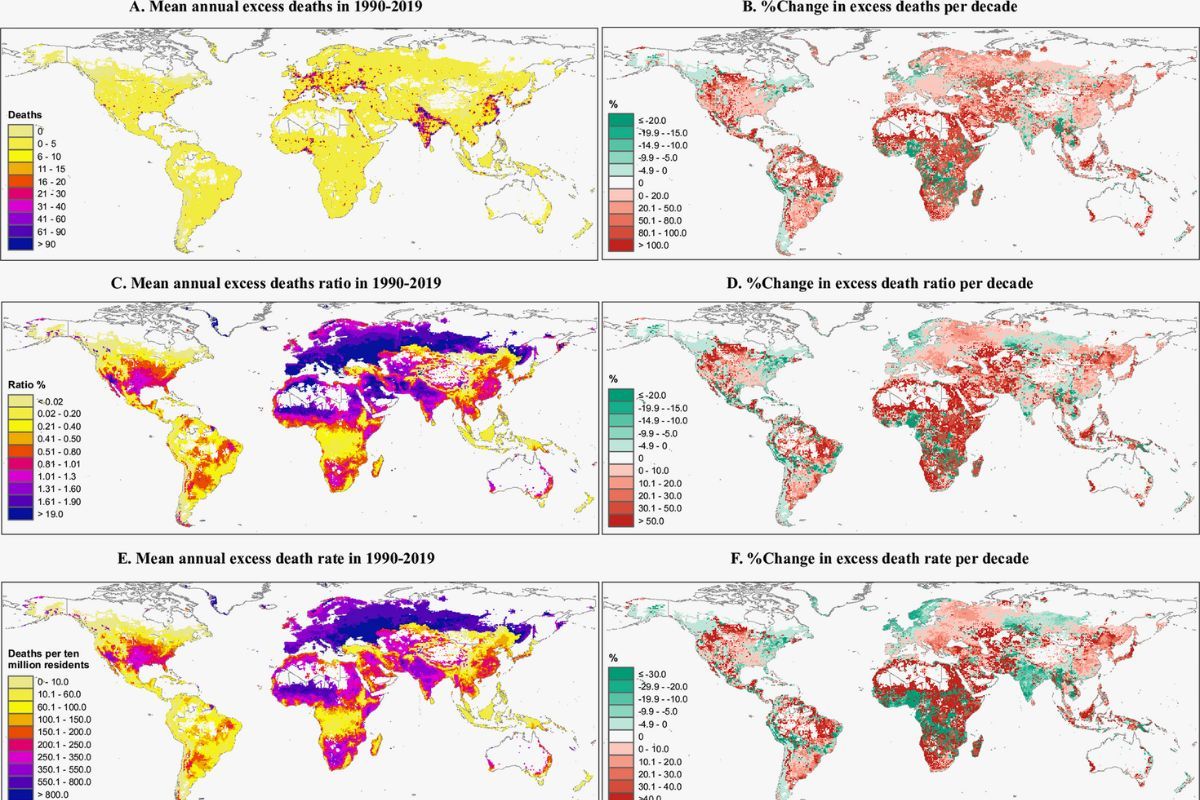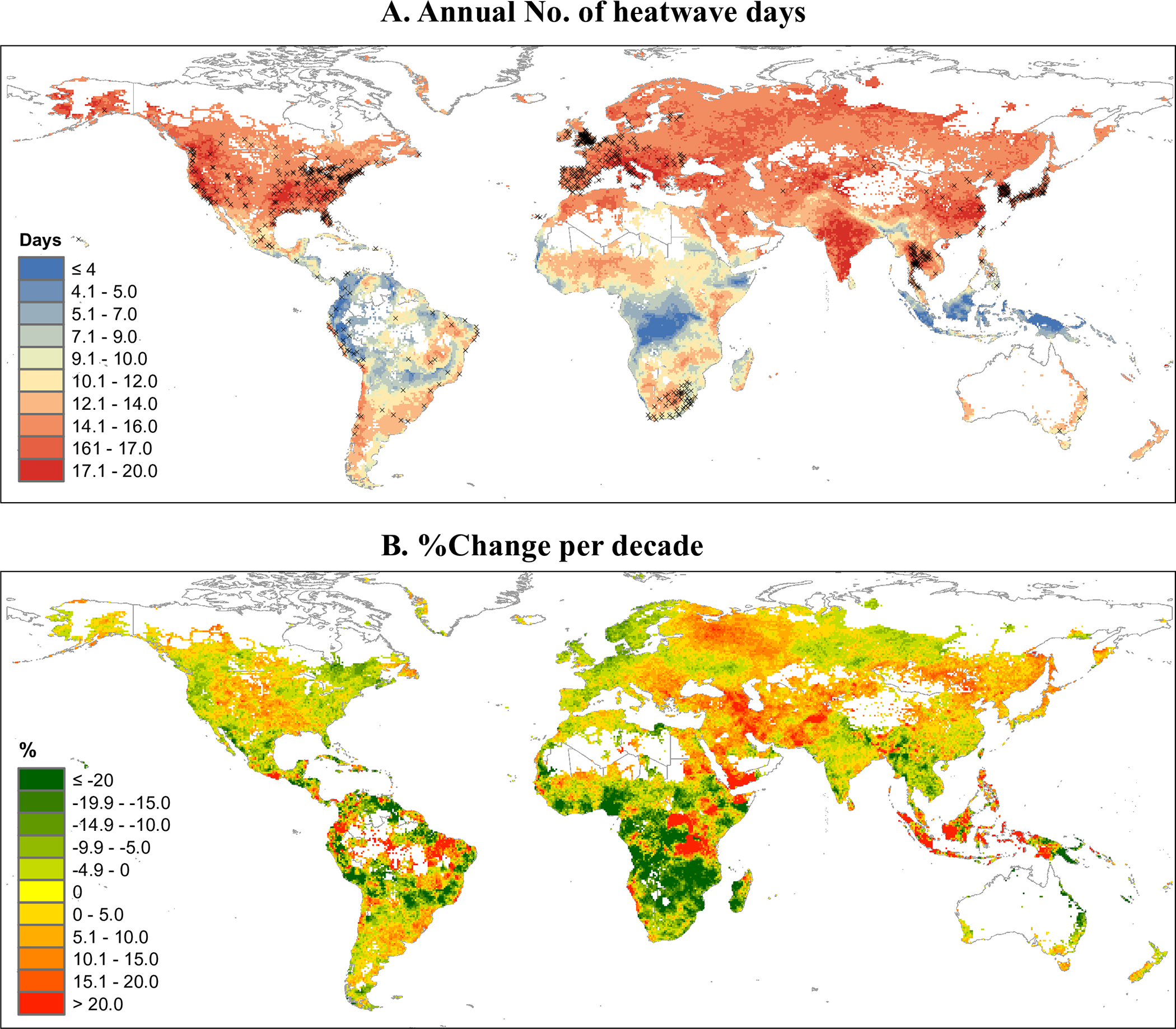As summer settles in, the grip of scorching heat waves tightens its hold on the country, exacerbating the severity of extreme temperatures due to climate change. A recent study published in PLOS Medicine and led by Monash University’s Professor Yuming Guo looked at data on daily deaths and temperature from 750 locations in 43 countries or regions has shed light on the grim reality of heat waves, attributing a staggering 153,078 deaths annually worldwide to their relentless onslaught.
Heatwaves, characterized by prolonged periods of exceptionally high temperatures, pose a significant threat by subjecting the human body to extreme thermal stress. While previous studies have assessed the impact of individual heatwaves on excess mortality within specific regions, a comprehensive global comparison of these statistics over an extended timeframe has been lacking.
India hit hard by heatwaves
The study, spanning three decades from 1990 to 2019, draws upon extensive data compiled by the UK-based Multi-Country Multi-City (MCC) Research Network. This comprehensive dataset encompasses daily mortality rates and weather conditions from 750 locations across 43 countries.
India leads the world in terms of additional deaths attributed to heatwaves, with statistics indicating that approximately 20.7 per cent which is (31,050 deaths) of the 150,000 deaths worldwide occur in the country. China follows closely behind with 13.8 per cent, while Russia ranks third with 7.89 per cent.

Regionally, Asia bears the brunt of these additional heatwave-related deaths, accounting for approximately 49 per cent of the global total. Europe follows with 31.6 per cent, trailed by Africa with 13.8 per cent. The Americas and Oceania register comparatively lower figures, at 5.4 per cent and 0.28 per cent, respectively.
Throughout the 30-year study period, a staggering 4,592,326 individuals worldwide succumbed to heatwave-related fatalities. Research indicates that areas characterized by dry climates and low to middle incomes recorded the highest estimated mortality rates.
Heat caused deaths globally and in Europe
According to the data spanning the last three decades from 1990 to 2019, heat has been accountable for around one percent of all deaths during hot weather conditions. This translates to 236 deaths per one crore population attributed to heatwaves. In Europe, heatwaves contributed to around 1.96 percent of all deaths during this period, equating to 655 deaths per 10 million people. These figures underscore the significant threat posed by heatwaves to Europe.
At a national level, Greece, Malta, and Italy experienced the highest proportion of deaths from all causes attributable to heatwaves compared to other countries, ranging from 2.47 to 2.59 percent. Additionally, Ukraine, Bulgaria, and Hungary recorded the highest heat-related mortality rates before adjustments. However, after adjustments, the highest death rates were observed in Niger, Chad, and Ukraine.
Research confirms a growing impact of heatwaves worldwide, with both an increase in their frequency and severity. Over the past three decades, the average number of heatwaves globally has risen from 13.4 days to 13.7 days. This upward trend aligns with the escalating temperatures observed globally, which continue to set new records. The first four months of 2024 witnessed a further escalation in temperatures, reaching unprecedented peaks across all months.

“Heatwaves are associated with substantial mortality burden that varies spatiotemporally over the globe in the past 30 years,” the authors say. “These findings indicate the potential benefit of government actions to enhance health sector adaptation and resilience, accounting for inequalities across communities.”
The authors add, “In the context of climate change, it is crucial to address the unequal impacts of heatwaves on human health. This necessitates a comprehensive approach that not only tackles immediate health risks during heatwaves but also implements long-term strategies to minimize vulnerability and inequality. The strategies include: climate change mitigation policy, heat action plans (e.g., heat early warning system), urban planning and green structure, social support program, healthcare and public health services, education awareness, and community engagement and participation.”
2023 hottest, 2024 may surpass
The data confirms that 2023 has clinched the title of the hottest year on record. Furthermore, scientists predict a 61 percent likelihood of 2024 surpassing this record, cementing its place as the hottest year to date. Notably, the ten hottest years in recorded history have all occurred after 2010. Research also substantiates a concerning trend of global temperatures rising at a rate of 0.35 degrees Celsius per decade.
While the onset of summer and the occurrence of heat-related disasters like heatwaves are not novel occurrences, their escalating risk in recent decades presents new challenges for communities worldwide. Recent reports highlight a surge in temperatures and heatwaves not only in India but also in various other regions across the globe. In Bangladesh, the Philippines, and South Sudan, extreme heat and heatwaves reached such severity that schools were compelled to close as a precautionary measure.
Professor Guo’s studies so far looking at increased deaths related to exposure to heatwaves have been studied, “the evidence mainly comes from limited locations,” he said.
“Our findings that heatwaves are associated with substantial mortality burden that varies spatiotemporally over the globe in the past 30 years suggest that there should be localised adaptation planning and risk management across all government levels.”

The Indian Meteorological Department reports that April 2024 marked the hottest April on record for Eastern India since 1901, with temperatures soaring to 28.12 degrees Celsius. West Bengal experienced the highest number of heatwave days in April 2024, marking a record in the past 15 years.
In a recent study, Indian scientists have issued warnings about the worsening situation in many parts of India due to rising temperatures and climate change. They project that by the end of the century, the risk of heatwaves in India may surge up to tenfold. Particularly, the southern and central regions of India are anticipated to experience the most pronounced escalation in heatwave occurrences.
Moreover, researcher indicates that with every two-degree Celsius rise in temperature, the vulnerability of individuals to heatwaves nearly triples. Wet bulb temperatures exceeding 32 degrees Celsius are deemed perilous for humans, while at 35 degrees Celsius, the body struggles to regulate its temperature. Alarmingly, the frequency of such dangerously high-temperature days is on the rise globally.
Keep Reading
Part 1: Cloudburst in Ganderbal’s Padabal village & unfulfilled promises
India braces for intense 2024 monsoon amid recent deadly weather trends
Support us to keep independent environmental journalism alive in India.
Follow Ground Report on X, Instagram and Facebook for environmental and underreported stories from the margins. Give us feedback on our email id greport2018@gmail.com.
Don’t forget to Subscribe to our weekly newsletter, Join our community on WhatsApp, and Follow our YouTube Channel for video stories.










